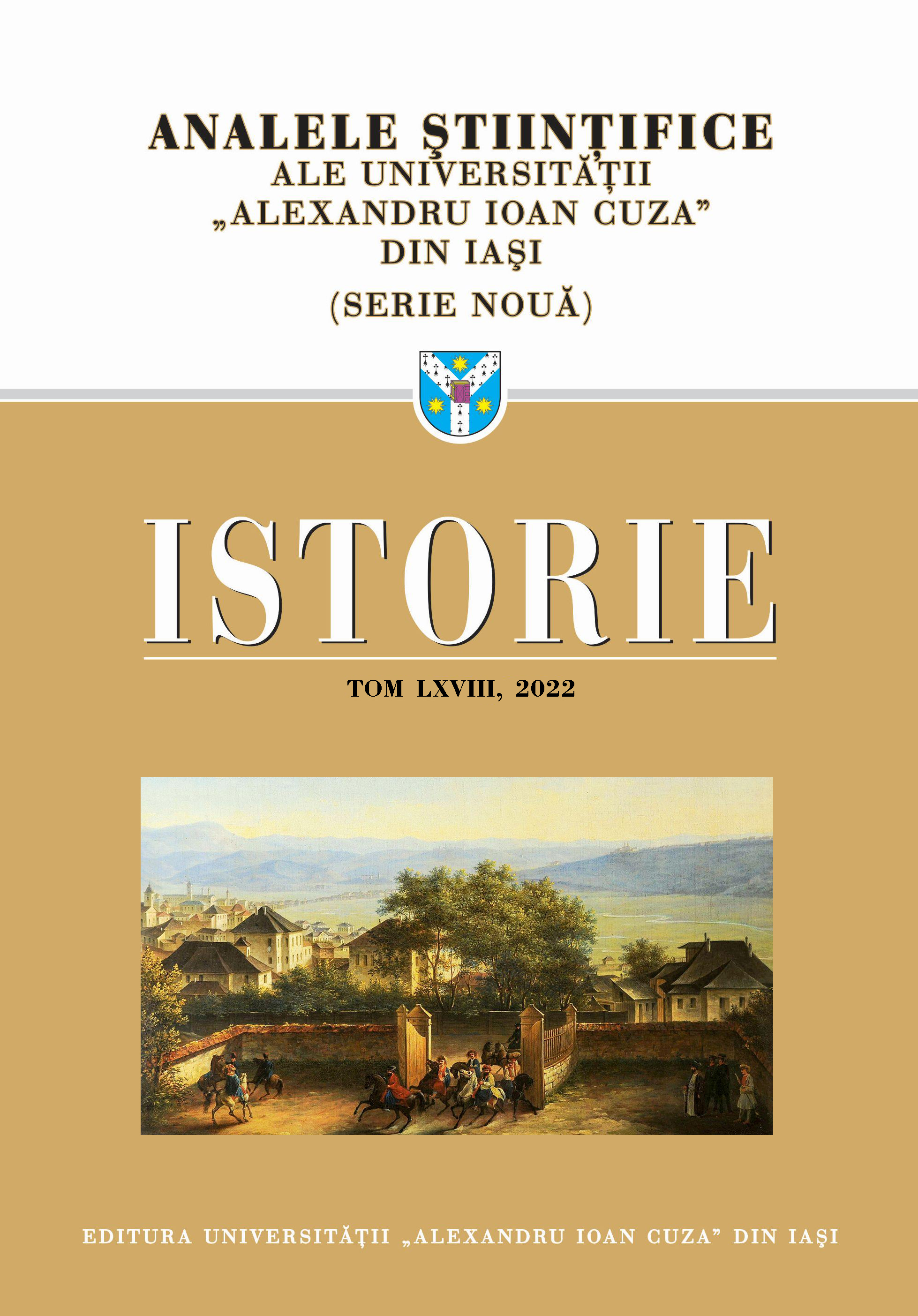Noi contribuţii privitoare la originea şi activitatea arhitectului Johann Freywald
New contributions to the origin and work of the architect Johann Freywald
Author(s): Laurențiu RădvanSubject(s): History, Cultural history, Architecture, Local History / Microhistory, Political history, Social history, 19th Century
Published by: Editura Universităţii »Alexandru Ioan Cuza« din Iaşi
Keywords: Johann Freywald; architect; Moravia; Romanian Principalities; neoclassical style;
Summary/Abstract: The present study deals with the origins, the arrival in Moldavia and the vast activity of the engineer and architect Johann Freywald. Until recently he was considered Austrian, but the recent discovery of two passports issued to the architect in 1802 and 1811 has allowed new research to be initiated into its origin. It came from Moravia, being associated with cities such as Prostějov (Prossnitz), Povel (Povl), Olomouc and Brno. He was the son of Johan Feiwald (1721-1825) and Marianne (1734-1807), his father being a well-known builder from Prostějov. After his studies, Johann Freywald distinguished himself in 1791, when he bought the Salm palace in Olomouc’s market square. He expanded it and tried to bring the city theater here, without success. Indebted, he declared bankruptcy in 1801, in the following years having problems due to debts or unfinished constructions.In these conditions, Freywald goes to Moldavia for the first time (1802), probably called by a great boyar for a project. He soon entered the service of Prince Alexandru Moruzi, who hired him to rebuild the palace in the center of the Moldavian capital of Iaşi, which had burned down in 1784 and was abandoned. The building, the largest in the country, received in 1803-1806 a new, neoclassical style, which will be highly appreciated in Moldavia in the following decades. Freywald will work in this style in the following period: on the arrangement of the theater hall in Iaşi, on the repair of the Cazimir house for the Academy, on the Palace Roznovanu in Iaşi, on the Sturza palace and the church in Ruginoasa, on the construction of the new church at the Neamţ monastery, on the new metropolitan cathedral in Iaşi, at the church at the Frumoasa monastery or at the church of St. George in Moghilău, in Podolia. He was also involved in setting up some monuments: in 1809, an obelisk in memory of a Russian officer, Aleksandr Engelhardt, who died in 1770 in Puţeni, in Covurlui county, and another in memory of Potemkin (probably the one from Rădenii Vechi, in Bessarabia); after 1832, Freywald worked together with Gheorghe Asachi and Nicolai Sungurov to erect the lions obelisk in the Public Garden in Iaşi.He will then move for a while to Bucharest, in Wallachia, where he will work on numerous projects: the reconstruction of the Catholic church, the landscaping of the banks of the Dâmboviţa River, the paving of streets, numerous houses in the city. In 1816 he went to Ioannina, Epirus, where he was to help erect some buildings and bridges for the famous Ali Pasha. Freywald will return to Wallachia where he will deal with the restoration of some churches, such as that of the Câmpulung monastery and, probably, that of the Sărindar monastery. He was also involved in business: in 1804, he returned to Moravia, being commissioned by the great boyar Săndulache Sturza to bring craftsmen for the cloth factory he established in Ruginoasa, in Moldavia, which operated until 1813-1814. He also built military hospitals, barracks, made plans, even drew the Balş family crest. He did not break away from his native places: later in life, his name is associated with the building of St. Bartholomew’s Church in Vrahovice, a suburb of Prostějov in 1831-1837. He was not exempt from challenges. Three problems arose in his constructions – more precisely in the church in Moghilău-Podolia (which collapsed), in the new church of the Frumoasa monastery (where intervention was made to save the building) and in the metropolitan cathedral in Iaşi (where, later, the vault collapsed) – which suggests that there were deficiencies in the structure, probably in the calculation of the weight of the vaults. With his wife, Ludowika Brenschütz von Schützenau, he had a girl and two boys (Julius and Gustav), the latter two very active as architects in the years 1840-1850 in the two Romanian principalities. It is possible that Johann died around 1847-1848 in Vienna (unconfirmed information). Johann Freywald remains the first important foreign architect to be active in the Romanian area, his legacy being partly visible to this day.
Journal: Analele Ştiinţifice ale Universităţii »Alexandru Ioan Cuza« din Iaşi. Istorie
- Issue Year: 2022
- Issue No: 68
- Page Range: 337-354
- Page Count: 18
- Language: Romanian

